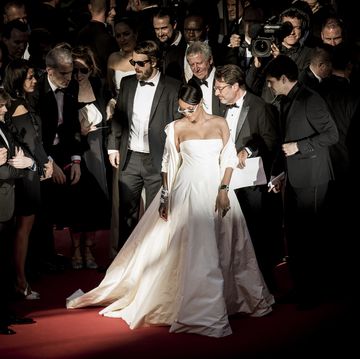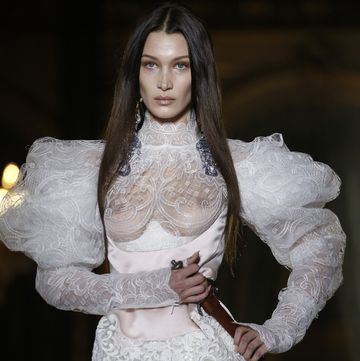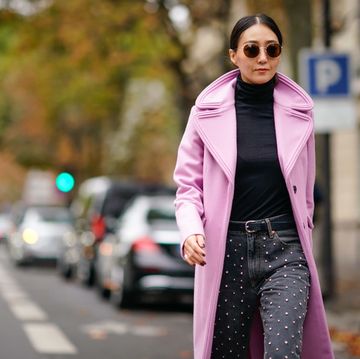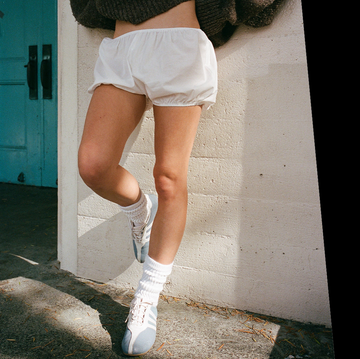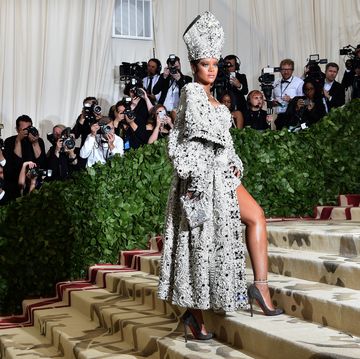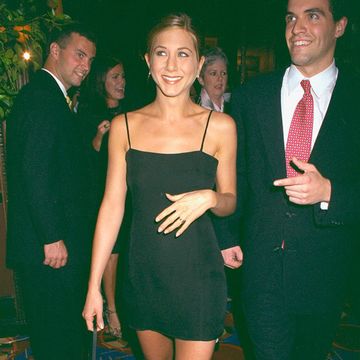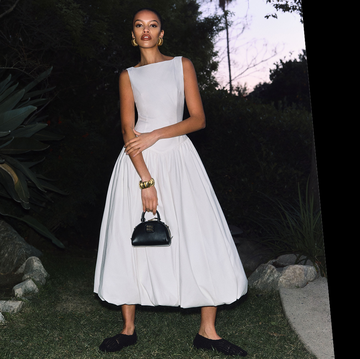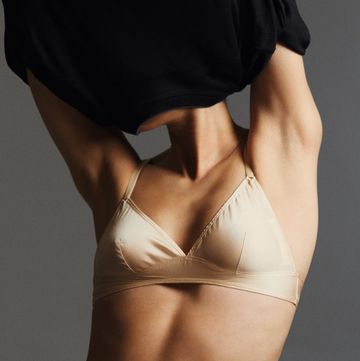Image: Chalayan s/s 2015, Getty
Jonathan Anderson stamped his mark on Loewe. The 30-year-old British designer, who shows his own-name label in London, was tapped a year ago to take the creative reins at the Spanish luxury leather goods house that is part of the LVMH stable. This was the designer’s debut, the success of which could be measured by the industry who’s who that filed backstage at the UNESCO headquarters to congratulate him, including the delighted LVMH chairman and CEO Bernard Arnault and his daughter Delphine.
On the one hand, it’s hard to imagine that such a relative newcomer (he has been in business since 2008) could have been catapulted into fashion’s orbit so fast – the LVMH conglomerate also owns a minority stake in Anderson’s eponymous line – on the other hand his lack of experience may have been the thing that enabled him to be so bold and take such risks. First, the brutal concrete architecture of Maison de l’UNESCO, where the audience perched randomly on sculpted rocks (‘I wanted everyone to have a different vantage point, their own view of the collection’), gave a fitting urban landscape to his conceptual clothes: ‘It was the idea of an advertising campaign in the street,' he said. With the collection, he wanted to ‘try to bring a lightness and freedom to it’, which meant a pale, loose butter-soft suede coat, raw linen skirts gathered at the waist, or a billowing white cotton blouse. Ironically, it was the solid, polished items he blended into the mix that looked more convincing. Bold slashes of colour – yellow, blue, brick red, pink, orange – came in full, high-waisted leather trousers cinched on the hip with judo-style belts and the T-shirts in peeling leathers. Then he got to mixing these in with J-Dubs quirks – latex-printed T-shirts, skinny jumpers with bold Vs on one shoulder and slashed from rib to rib, or a black shift dress pinned with flapping swatches of bright leather.
On top of the ready-to-wear, the reason for hiring such a young gun at Loewe – essentially a leather goods house – was to see what he could bring to the bags (or rather, how many new young fashion-avid customers he could bring in to buy the bags). And he seemed to have nailed it: reworking the house’s 1975 Amazona bag which, like the rest of the collection, had the Anderson youth-luxe stamp. For these alone, you could see why he was hired.
Over at , the final three dresses pictured Ninja-like masked faces. Was this a political comment on veiled women? A 2014 revisiting of his boundary-breaking 1998 Between collection, which ended with a masked naked model? Not at all, said Hussein Chalayan backstage. He titled his collection Moor’s Gaze and explained that he wanted to celebrate the mystique and culture of the Maghreb of north-west Africa. ‘I was interested in their charm and their vulnerability. I liked the idea that they were looking out at you, it seemed to me a charming way to put it.’ As ever with Chalayan, it was, as he put it, ‘more about the idea of looking through things to discover.’
The fluid tailoring he opened with appeared to recast black robes as draped, bare-armed coats, split-at-the-sides trousers, big-shouldered jackets and narrow trousers. For those of us who didn’t yet know his theme, they just looked like simple, timeless, graceful clothes. The aperture then narrowed to focus on the body, with black fabric grids that left windows on the skin. You could just about make out an embroidered rose garden as you gazed through a Moorish lattice screen on a strapless dress. A large-brimmed sunhat cast its shade over a perforated white dress or a jumpsuit dappled with a grey print looked as if shadows were dancing across it. Models tugged on fine cords to pull up or let down their coats, while jackets were magically stitched to dresses and were sometimes covered in patterns reminiscent of ornate tiles. Then came the orange tree orchards – crisp green leaves bloomed out of ‘irrigation channels’ in the form of a graphic monochrome network of grids printed over wafting silks and eventually resulting in delicate miniature embroidered trees on a sun dress.
It was all signature Chalayan – the instantly recognisable handwriting of a deeply respected (and much referenced) designer. As ever, a collection woven with a story that was as charming and intelligent as the clothes.

